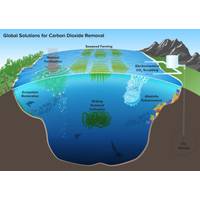
Carbon Dioxide Removal (CDR) ... To Clear the Air, Look Beneath the Waves
to be buried in underground reservoirs. Not every technique is being pursued to the same extent, and experts throughout the field agree more research is needed to understand the full impacts and potential consequences of these processes. So, where does ocean CDR currently stand?Priming the pumpDr. Ken Buesseler, senior scientist in marine chemistry and geochemistry, plus a Woods Hole Oceanographic Institution and NASEM committee member, points out these six tactics are just a subset of options, moreover no approach can stand alone. Buesseler specializes in the measurement of radioactive elements in
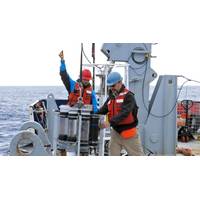
WHOI: Ocean “Pumped” to Capture More Atmospheric Carbon
and releasing oxygen in the process. When phytoplankton die or are eaten by zooplankton, carbon-rich fragments sink into the ocean, then consumed by other creatures or buried in sediments. In a paper published on April 6, 2020 in Proceedings of the National Academy of Science, WHOI geochemist Ken Buesseler and colleagues showed that the depth of euphotic, or sunlit, zones vary throughout the ocean. This matters since the phytoplankton’s ability to take up carbon depends on the amount of sunlight that is able to penetrate the ocean’s upper layer.By using chlorophyll sensors, which indicate
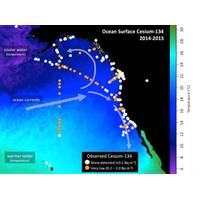
Fukushima Site Still Leaking After 5 Years
Fukushima nuclear accident, there is still no U.S. federal agency responsible for studies of radioactive contaminants in the ocean. But scientific data about the levels of radioactivity in the ocean off our shores are available publicly thanks to ongoing efforts of independent researchers, including Ken Buesseler, a radiochemist with Woods Hole Oceanographic Institution (WHOI), who has led the effort to create and maintain an ocean monitoring network along the U.S. West Coast. Since 2011, Buesseler has received contributions from citizens, small businesses, foundations and large companies to
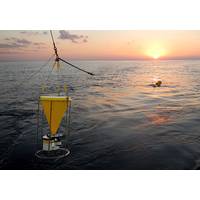
Examining the Fate of Fukushima Contaminants
Nuclear Power Plant in a new paper published August 18, 2015, in the American Chemical Society's journal, Environmental Science and Technology. The research aids in understanding what happens to Fukushima contaminants after they are buried on the seafloor off coastal Japan. Led by Ken Buesseler, a senior scientist and marine chemist at the Woods Hole Oceanographic Institution (WHOI), the team found that a small fraction of contaminated seafloor sediments off Fukushima are moved offshore by typhoons that resuspend radioactive particles in the water, which then travel laterally with southeaste
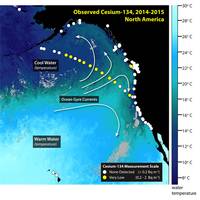
Fukushima Radioactivity Detected at British Columbia Shoreline
along any of the beaches or shorelines where the public has been sampling since 2013. “Radioactivity can be dangerous, and we should be carefully monitoring the oceans after what is certainly the largest accidental release of radioactive contaminants to the oceans in history,” said Ken Buesseler, a marine chemist at WHOI who has been measuring levels of radioactivity in seawater samples from across the Pacific since 2011. “However, the levels we detected in Ucluelet are extremely low.” Scientists at WHOI are analyzing samples for two forms of radioactive cesium that can
WHOI: Fukushima Radioactivity Detected Off West Coast
more than 10 million times the levels recently detected near North America. "We detected cesium-134, a contaminant from Fukushima, off the northern California coast. The levels are only detectable by sophisticated equipment able to discern minute quantities of radioactivity," said Ken Buesseler, a WHOI marine chemist, who is leading the monitoring effort. "Most people don't realize that there was already cesium in Pacific waters prior to Fukushima, but only the cesium-137 isotope. Cesium-137 undergoes radioactive decay with a 30-year half-life and was introduced to the environment
Radioactive Ocean Website Garners Support
the public to build the most comprehensive and up-to-date dataset on marine radiation levels in the aftermath of the 2011 Fukushima Dai-ichi Nuclear Power Plant disaster. With no U.S. government or international plan to monitor the radiation levels in the ocean since the disaster, WHOI marine chemist Ken Buesseler launched a crowdsourcing campaign and citizen science website to include and empower the public. He is posting all of the current radiation level data online. “Whether you agree with predictions that levels of radiation along the Pacific Coast of North America will be too low to be of

WHOI Scans Ocean for Fukushima Radiation
or international plan to monitor it, a new project from Woods Hole Oceanographic Institution (WHOI) is filling a timely information gap. Just two weeks after launching the crowd sourcing campaign and citizen science website, “How Radioactive Is Our Ocean,” WHOI marine chemist Ken Buesseler’s project has received more than 70 individual donations from the concerned public. New data on seawater radiation levels will be posted on the website today. “We’ve received a lot of interest from the public so far, which has been great. Right now we’re gathering important



 February 2024
February 2024





